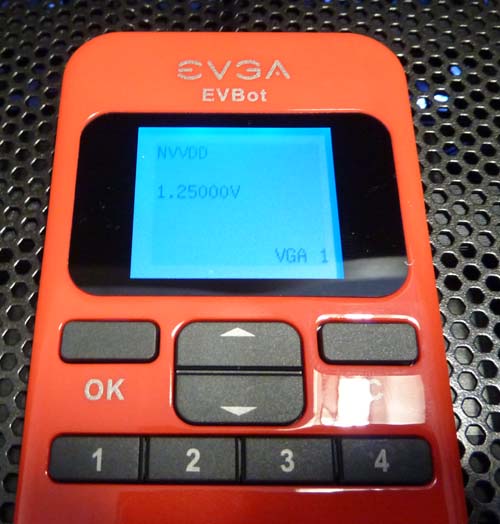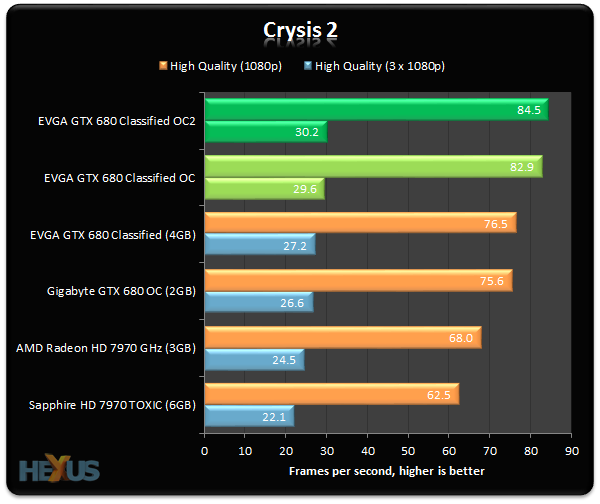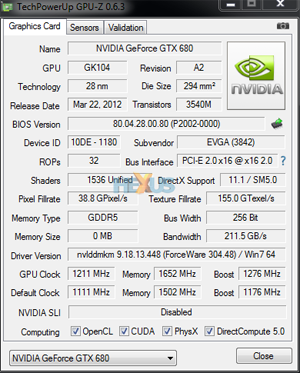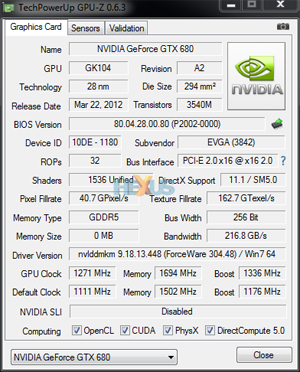Overclocking, with an EVBot twist

Overclocking used to be easy on graphics cards. The user would fire up an appropriate application, give the GPU some voltage love, and then watch as frequency and temperatures scaled that little bit higher. GeForce GTX 680s, however, generally don't ship with explicit, working GPU voltage control. Applications such as EVGA's own Precision X purport to offer higher voltages than the default 0.988V - GPU Voltage Tuner 'sets' 1.175V - but this is something of a misnomer.
You see, at default settings EVGA's card can automatically GPU Voltage Boost to 1.175V anyway, according to our logs, which is the NVIDIA-imposed ceiling on the card. Manually inputting a default 1.175V doesn't force the card to increase voltage further; it simply enables the figure to be reached on cards that don't GPU (Voltage) Boost as well as EVGA's.
There's a way around this 1.175V limit and it comes by way of the aforementioned £50 EVBot. EVGA supplied it with the reviewed card but you will need to purchase it separately. Anyhow, once connected to the header next to the PCIe power plugs by a metre-long cable - EVBot can take in four inputs - the device offers granular control over the GPU voltage, memory voltage, PCIe voltage and OverCurrent Protection voltage.
And the real enthusiast will want EVBot, for it enables GPU voltage to be raised from 0.85V to 1.85V - anything above 1.25V is bordering on dangerous for air-cooling. Likewise, memory voltage can be increased from the default 1.60V to a RAM-frying 2.0V.
We increased the Power Target to a maximum 131 per cent and then overclocked the Classified in two ways. Firstly, we used EVGA's Precision X software and overclocked the card to its stable limit. Secondly, we used EVBot and increased GPU voltage to 1.25V and memory voltage to 1.70V and watched the cooler cringe in response. Here's what we got to.
The standard-setting overclock on the left and EVBot-fuelled setting on the right. We managed to eke out an extra 60MHz on the core and 168MHz on the memory with the over-volted parameters. It's worth nothing that while the GPU core frequency is very good - indeed, the highest we've thus far seen from a GTX 680 - the memory overclock is below average. Perhaps the need to push 4GB of memory inhibits final speeds?

Yup, the fastest becomes even faster. Understand that the under-load power-draw increases by around 100W from the standard Classified's, and noise increases from around 40dB to a much more noticeable 45dB.











